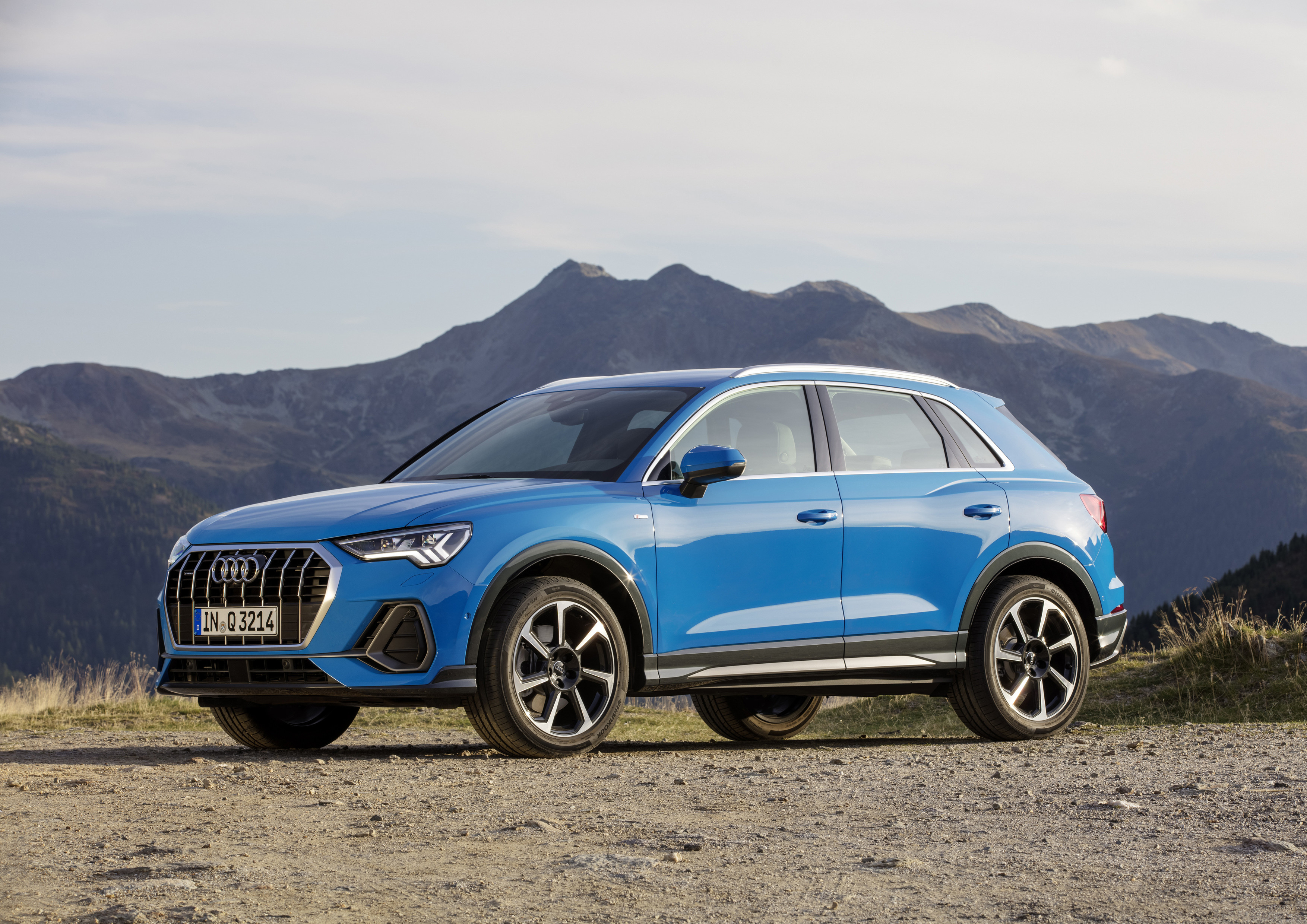
Extensive engine range for new Audi Q3
Audi is extending its engine range for the Audi Q3 to include a 2.0 TFSI in two output ratings and two other versions of the 2.0 TDI. As such, buyers can now choose from seven engine/transmission variants for the compact family SUV. The quattro permanent all-wheel drive provides additional traction, stability and dynamic handling. The base price for the new Audi Q3 in Germany is 33,700 euros.
Customers wanting to order the new Audi Q3 can choose from three gasoline and two diesel engines in combination with front-wheel or quattro drive. Their power outputs range from 110 kW (150 hp) to 169 kW (230 hp). All engines are four-cylinder direct injection units with turbocharging. They are powerful, refined and efficient. A six-speed manual transmission or a fast-shifting seven-speed S tronic is used to transmit the power.
The entry-level engine is the 1.5-liter gasoline engine with 110 kW (150 hp) and 250 Nm (184.4 lb-ft) of torque. It features the cylinder on demand system, which switches off the second and third cylinder temporarily at low and medium loads, thus helping reduce fuel consumption. With the manual six-speed transmission, the Audi Q3 35 TFSI (combined fuel consumption in l/100 km: 6.3 – 6.0* (37.3 – 39.2 US mpg); combined CO2 emissions in g/km: 145 – 139* (233.4 – 223.7 g/mi)) accelerates from 0 to 100 km/h (62.1 mph) in 9.6 seconds, and takes it to a top speed of 211 km/h (131.1 mph). If the customer chooses the seven-speed S tronic (combined fuel consumption in l/100 km: 5.9 – 5.7* (39.9 – 41.3 US mpg); combined CO2 emissions in g/km: 134 – 130* (215.7 – 209.2 g/mi)), the sprint takes 9.2 seconds, with the propulsive power ending at 207 km/h (128.6 mph).
The 2.0 TFSI with seven-speed S tronic and quattro drive constitutes the next step up from the entry-level version. In the smaller output rating it produces 140 kW (190 hp) and develops a maximum torque of 320 Nm (236.0 lb-ft). As such, the Audi Q3 40 TFSI(combined fuel consumption in l/100 km: 7.5 – 7.2* (31.4 – 32.7US mpg); combined CO2emissions in g/km: 170 – 164* (273.6 – 263.9 g/mi)) sprints from 0 to 100 km/h (62.1 mph)in 7.4 seconds and reaches a top speed of 220 km/h (136.7 mph).
The more powerful version, the Audi Q3 45 TFSI (combined fuel consumption in l/100 km: 7.6 – 7.3* (30.9 – 32.2 US mpg); combined CO2 emissions in g/km: 173 – 167* (278.4 – 268.8 g/mi)) delivers 169 kW (230 hp) and 350 Nm (258.1 lb-ft). It accelerates 1.1 seconds faster from a standstill to 100 km/h (62.1 mph) and goes on to a top speed of 233 km/h (144.8 mph).
A 2.0 TDI with 110 kW (150 hp) forms part of the diesel lineup. Its highlights are two balancer shafts in the crankcase, the minimized internal friction and a common-rail system with maximum pressure of 2,000 bar. The smooth-running unit delivers 340 Nm (250.8 lb-ft) of torque to the camshaft in the range of 1,750 to 3,000 rpm. In combination with seven-speed S tronic and front-wheel drive (combined fuel consumption in l/100 km: 4.9 – 4.7* (48.0 – 50.0 US mpg); combined CO2 emissions in g/km: 128 – 123* (206.0 – 197.9 g/mi)) the Audi Q3 35 TDI takes 9.2 seconds to accelerate from a standstill to 100 km/h (62.1 mph), with the propulsive power ending at 207 km/h (128.6 mph). With the six-speed manual transmission and quattro drive (combined fuel consumption in l/100 km: 5.7 – 5.5* (41.3 – 42.8 US mpg); combined CO2 emissions in g/km: 150 – 145* (241.4 – 233.4 g/mi)) the performance figures are zero to 100 km/h (62.1 mph) in 9.3 seconds, with a top speed of 211 km/h (131.1 mph).
The top-of-the-line diesel engine is the 2.0 TDI with 140 kW (190 hp). It is available only with quattro drive and dual-clutch transmission. Its 400 Nm (295.0 lb-ft) of torque is available between 1,750 and 3,250 rpm. As such, the Audi Q3 40 TDI (combined fuel consumption in l/100 km: 5.6 – 5.5* (42.0 – 42.8 US mpg); combined CO2 emissions in g/km: 148 -145* (238.2 – 233.4 g/mi)) accelerates from 0 to 100 km/h (62.1 mph) in 8.0 seconds, before going on to a top speed of 221 km/h (137.3 mph).
The quattro permanent all-wheel drive comes standard on the two-liter gasoline engines and the top-of-the-line diesel engine. It gives the new Q3 a major boost in terms of traction, stability and dynamic handling in all road conditions. Its centerpiece is an electronically controlled hydraulic multi-plate clutch on the rear axle. The management system can already begin sending a portion of the torque from the front axle to the rear axle when the driver turns sportily into a corner, for example. As soon as the driver accelerates, the power presses the SUV seamlessly into the curve. At the limits of performance the quattro drive works closely together with the wheel-selective torque control, which gently brakes the wheels with reduced load on the inside of the curve, thus increasing the drive power to the wheels on the outside of the curve with the higher wheel load. This difference turns the car into the bend allowing it to follow the steering angle. The upshot: precise, neutral handling coupled with enhanced dynamic cornering.






